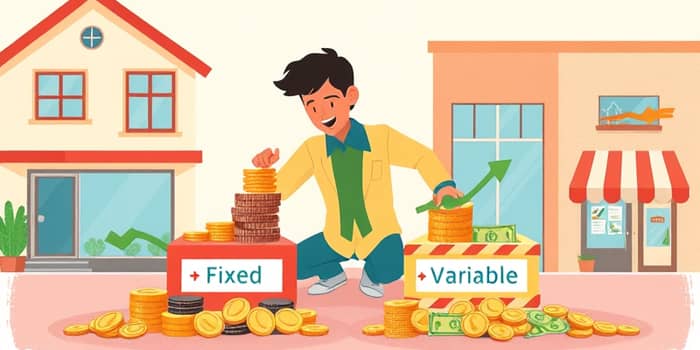
Achieving financial freedom begins with a clear vision of where your money goes. By distinguishing between your constant commitments and your flexible outlays, you can shape a budget that adapts to life’s twists and turns.
Every individual and business wrestles with two fundamental types of costs. Fixed costs remain constant over time, providing predictability in your monthly ledger. In contrast, variable expenses fluctuate based on usage and personal choices.
Fixed expenses often include rent or mortgage, insurance premiums, loan payments, tuition, childcare, subscriptions, and property taxes. These obligations recur with little variation. Variable spending covers groceries, entertainment, gas, utilities on usage plans, medical bills, raw materials, and commissions. Recognizing these differences is the first step toward stronger financial control.
Separating fixed and variable spending unlocks insights and opportunities:
Implementing these tactics can transform vague aspirations into concrete results. Start by applying simple rules and tracking methods:
Concrete examples help clarify how personal and business expenses map onto these categories. Some costs blend both attributes, known as semi-variable or mixed expenses. A cell phone plan, for instance, may charge a flat rate plus fees for additional minutes or data overages.
By mapping your expenses into this matrix, you gain an instant visual of spending patterns and can pinpoint which costs to target for adjustments.
Awareness of these mistakes prevents budget drift and ensures your projections remain grounded in reality.
By dividing and conquering your expenses, you transform budgeting from a chore into a powerful tool for financial empowerment. You’ll gain confidence knowing which payments are non-negotiable and where you can flex to achieve savings. This clarity fosters resilience in the face of emergencies, life changes, or shifts in business conditions.
Take control today: map your expenses, apply proven strategies, and watch your financial well-being flourish. Your journey to financial clarity starts now, one categorized expense at a time.
References













